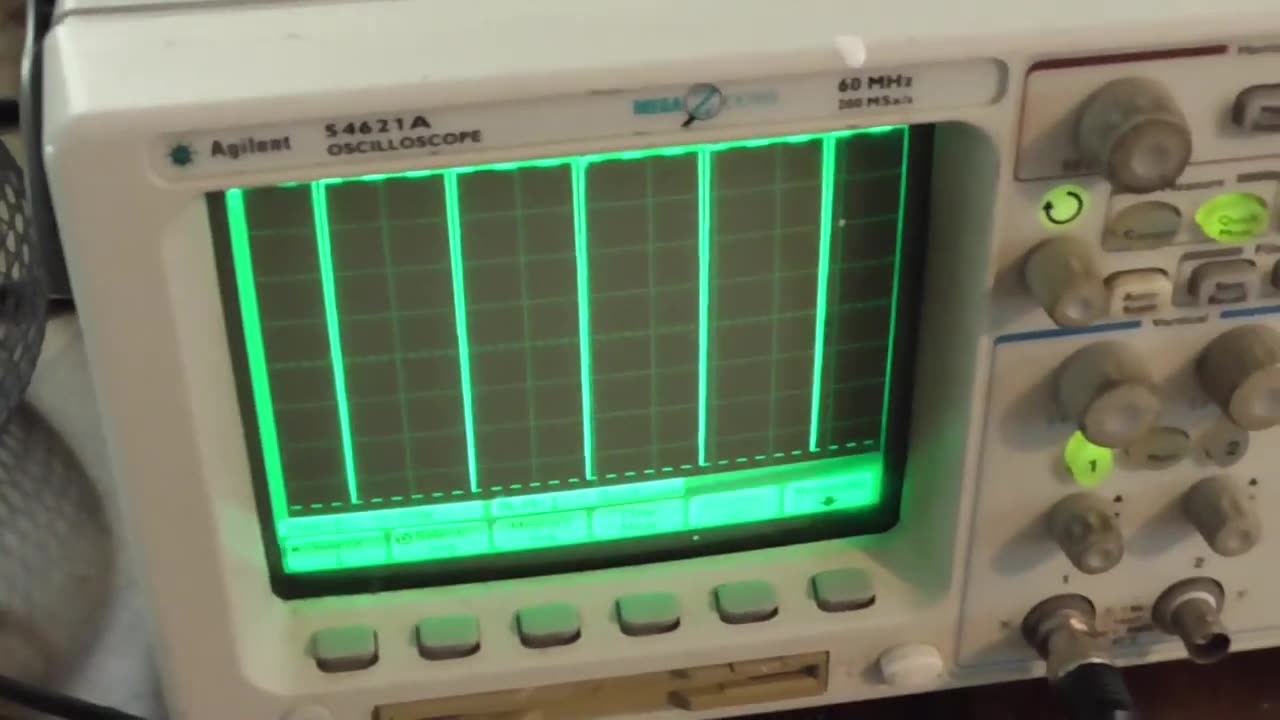Premium Only Content

High Voltage Pulse Galvanic Cell
Introduction:
In this description, we will delve into the details of building a modified galvanic cell with two dissimilar metals, which can generate close to 1 Volt of electricity. The primary objective behind creating this special kind of cell is to conserve the metal from breaking down too fast by slowing down the electron flow and the reaction of the cell.
This cell can be used to drive a high voltage step-up oscillator that can create a back EMF very similar to the Bedini motor. We will explain the inner workings of this homemade battery and how it can be used to quickly charge a capacitor at high voltage.
Building the Modified Galvanic Cell:
To build this modified galvanic cell, we need two dissimilar metals, a simple water and flower paste, and some basic electronic components like a high voltage step-up oscillator and a capacitor. In this case, the metals used were magnesium and carbon, respectively. Still, one can use any kind of dissimilar metal, and even tinfoil can be used instead of magnesium.
The first step is to create a gooey paste by mixing flour and water. Then, we insert the two dissimilar metals into the paste, making sure they are not touching each other. The paste acts as the electrolyte that enables the chemical reaction between the two metals to create an electric potential. The logic behind using the paste is to slow down the electron flow and the reaction of the cell, which helps conserve the metal from breaking down too fast.
Generating Electricity:
The chemical reaction between the two dissimilar metals generates close to 1 Volt of electricity, which can be used to drive a high voltage step-up oscillator. The oscillator is a flyback circuit that creates a back EMF similar to the Bedini motor. When the oscillator is activated, it produces a very quick high voltage pulse, a sharp spike, that can be used to quickly charge a capacitor at high voltage.
Charging a Capacitor:
To charge the capacitor, we use a trigger system like a neon or an SCR, which is activated when the voltage reaches around 80 volts. The capacitor is a small 10 UF capacitor that converts the high voltage pulse to amps. When the capacitor discharges, it creates real amps that can be used to charge a storage device like a super capacitor or a car battery.
Conclusion:
In conclusion, this homemade battery is an excellent example of how we can use simple materials and basic electronic components to generate electricity. By using a modified galvanic cell with two dissimilar metals, we can create a high voltage pulse that can be used to charge a capacitor quickly. This pulse can be used to charge a variety of storage devices, including super capacitors and car batteries, making it a versatile and cost-effective solution. With some tinkering and experimentation, it's possible to improve the efficiency of the system and achieve better results.
Forum:
http://typeright.social/forum
Please Help Support My Research: https://youtu.be/pYXETBB40j0
-
 17:59
17:59
Joel Lagace
9 months ago $0.13 earnedModern Moray Generator
2845 -
 2:47:33
2:47:33
Clenzd Gaming
4 hours ago $1.06 earnedRanked redemption! Christ is King!
21.9K1 -
 1:29:23
1:29:23
Slightly Offensive
6 hours ago $9.37 earnedTop Secret CIA Docs LEAKED Showing the Austrian Painter SURVIVED | Nightly Offensive
49.2K36 -
 4:03:55
4:03:55
Saycred Angel Live
5 hours ago!JEEP🔥LET'S TURN THIS TUESDAY UP🔥!TANGIA #RUMBLETAKEOVER
30.3K -
 15:53
15:53
Producer Michael
10 hours agoWHY I MOVED TO LAS VEGAS! (CALIFORNIA IS DOOMED)
56.5K8 -
 9:05:08
9:05:08
Dabkillah
11 hours ago🔴LIVE-DABKILLAH-For The BEST CHAT and ok gaming lol
50.5K1 -
 4:15:17
4:15:17
Foaly's Pub
7 hours ago $1.15 earnedFOALY'S PUB GAME DEN #768(HALO INFINITE #175)
31.2K -
 1:31:31
1:31:31
Adam Does Movies
12 hours ago $1.94 earnedHanging Out, Talking Movies + YouTube Silver Play Button Unboxing! - LIVE!
40.6K2 -
 1:22:50
1:22:50
Glenn Greenwald
9 hours agoRight-Wing Populists Barred from Running in Democratic World; JFK Reporter Jeff Morley on CIA Involvement and his Testimony in Congress Today | SYSTEM UPDATE #432
133K56 -
 1:56:28
1:56:28
Anthony Rogers
5 days agoEpisode 359 - The Dark Side of Disney
19.1K1